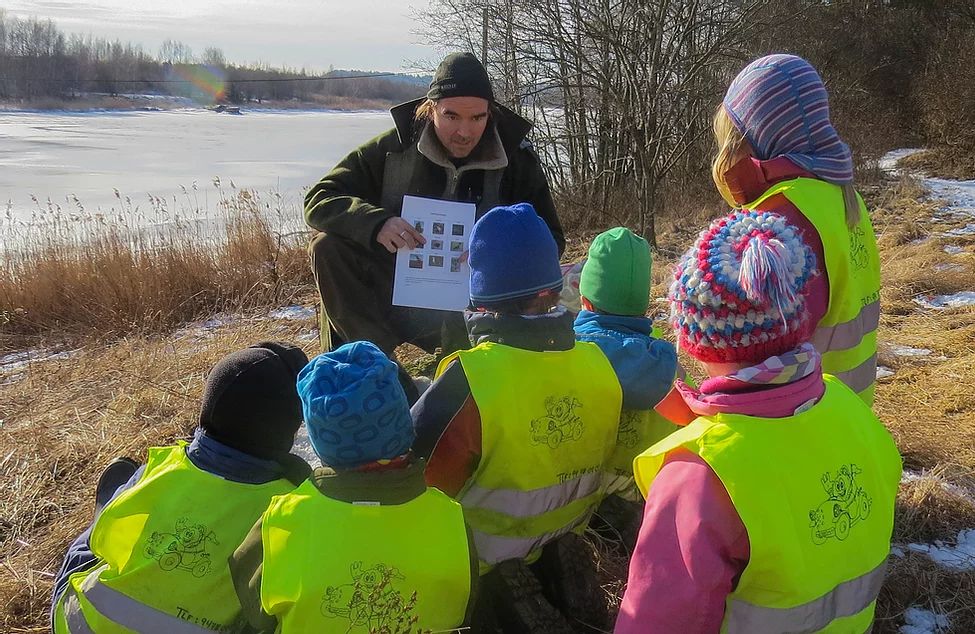Tips of a Nature Guide: How to make people reconnect with nature

It has been a while since the last meeting with Randy Gunnar Bohmann-Lange from Norway: In October 2018, the Nature Guide took us on a memorable tour as part of a network meeting to show the beautiful nature around Oslo. Now it was time to reunite digitally and welcome Randy as a guest speaker at the third Nature Guide Network online seminar last Friday afternoon.
Almost 30 participants joined the webinar to learn more about the topic “from nature information to deep nature connection”. Before Randy immersed into the topic, he shared a bit of his story first: that he was born in Key West Florida, how he spend his childhood playing in nature, his eye-opening journeys to Ecuador and Costa Rica, his work as a Greenpeace activist and his studies in biology and ecology.

Today, Randy lives on an island in Norway on a permaculture farm with his wife. He works in the visitor center of the Ytre Hvaler Nationalpark and gives his own guided tours. The aim of those tours is to reconnect the participants with nature, to awake their curiosity and to communicate the wonder of nature. One practice to achieve this is to simply sit in one spot and observe the surrounding with a peaceful mind: What do the participants hear? What is the nearest or most distant sound? What do they smell? Which birds or other animals do they recognize?
It is important to use our senses to experience the world around us and to train them, especially when living in a modern community, not surrounded by nature. Therefore, Randy also likes to encourage his guests to reawaken their senses, to make them discover things instead of just showing them. Useful tools for doing so are blindfolds or earplugs as well as walking barefoot, so that the visitors focus more on touching and feeling again.

Randy has already welcomed a great variety of guests including for example children, students or also traumatized soldiers. Before going outdoors, he recommends giving a short briefing, especially when the guests are not used to being in nature. During the tour, he tries to make the guests figure out the answers to their own questions instead of just answering them. Also, he says that it is helpful to use charismatic species of the local area and their traces to make memorable experiences. Later his participants could identify for example squirrels or mice in one area just by looking at bites on a nut or pinecone.

Randy also gave some tips on how to start nature interpretation without biological background:
- Start with one topic that you are interested in and passionate to learn more about.
- Do not be afraid of questions, you cannot answer. Give back questions, be open about what you do not know or share experiences you made regarding the topic instead.
- Make adults comfortable to find the wonder of nature: being aware, being present, listening, feeling, not being embarrassed.
In the final discussion, the participants were able to ask questions or share their own experiences. For example, we talked about Nature Guiding in cities and the challenge to find nature in urban places. Next, the challenge to find balance between showing nature without disturbing it was discussed. Here, Randy advised for example to bring own requisites that you can show to your guests, so that you do not have to take too much from nature. Further, he recommended sticking to basic knowledge when guiding in a new or not well-known area and expanding your special knowledge about the area over time. The question, if it is possible to reach every tour participant as a guide, Randy answered honestly that sometimes your message might not get through to everybody but you can always try to inspire people and make them take something home. In the end, his experience is that being a nature guide is a great way to make people connect with nature again and to make them find things out on their own.

